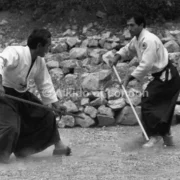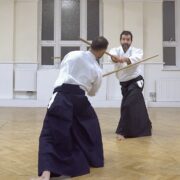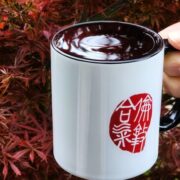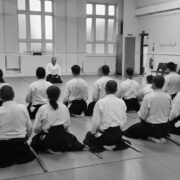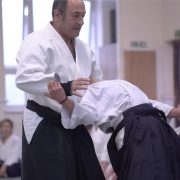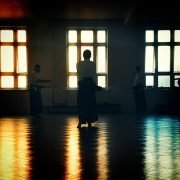Thoughts on training

I wrote this article several years ago, I think 2015. It was intended mainly for my students and to anyone else that showed any interest, that there was always more to training than just turning up. This may sound obvious but I would see that we can all too often get caught up with the energy of a class. It is fun and I don’t mean that in a frivolous way as it is a major part of why we go to class. However, it struck me that the “extra training”, that something else was missing. To get it, to get something we needed to do that little extra. It was as much a mental attitude as it was a physical one.
Now, today in early 2020 nearly all of us find that we are unable to go to our regular classes. We are obliged, rightfully so, to stay at home while the country and countries try to control the consequences of this terrible contagion, Covid 19. So we have turned to remote communication and the internet to keep ourselves in touch. It seemed relevant to re-publish it as we continue to work on our training in the best way we can.
Training in Aikido and martial arts in general is undoubtedly a complex process and operates on many levels. These processes are not always obvious to us. It is difficult to assess yourself when you’re in the thick of it and useful pointers then become very helpful if not essential in order to progress. It is also where thinking about what you are doing, that is to say, to give your training proper consideration is a much needed aspect of it and needed in order for that progress to take place. My emphasis here is the thinking that carries on not only on the mat but also continues off the mat and in our spare time whenever we can. The experience of training together with comments and advice given in class can then be taken on board and hopefully better understood.
Self study at its most basic level is “seeing” and “listening” and following basic instruction. For a beginner memorising the shape of the form, the hand and foot work, or trying to remember the ukemi is usually enough. For the more experienced student this could be recalling the feel of a throw, the cut of a sword, the settling of the hips etc. This increased attention to training will hopefully show itself and become apparent when the student returns to the mat. It shows itself in the general attitude and progress made which is more than just the result of class time alone. 5 minutes here and there, of thinking and going through it in your head, or 30 mins at home doing movements on your own, trying to recreate a sense of a particular class, breaking it down or putting it together again. Even picking up the bokken and working through exercises whenever possible all helps in this.
It is never as simple as just doing a lot of classes. It is also the quality. A student can end up going through the motions machine like, without thought and maybe trying to “force” out a result. It is also not an excuse to train less. Regular consistent training is needed. Observe and be aware of where you are in your training and what you need to work on whenever possible.
Some times we get stuck with no apparent progress. A period of time when we are “stuck” with no end in site. These are the moments where it is essential to return to that introspection, to self reflect. Perseverance is needed here even if frustrated and feeling at a loss. Presence of mind also plays a part. How much of you is engaged, how present are you, in class, at work or home? So often the body is there but not the mind? It can be difficult sometimes as one has to switch from work mode or domestic mode etc, and “be” in class. “Presence of mind” allows the quality of training to lift itself but on a pragmatic level it makes safer training and minimises injury.
With experience, ones knowledge and capacity grows. We can apply ourselves better, work more efficiently and productively. Self knowledge brings depth to ones training and that is always more enjoyable and rewarding. We also have to get on with it and just do it and sometimes, on occasion ‘magic” happens, a kind of transcendent practice or a throw, a move where that often over stated “moving zen” actually becomes real.

